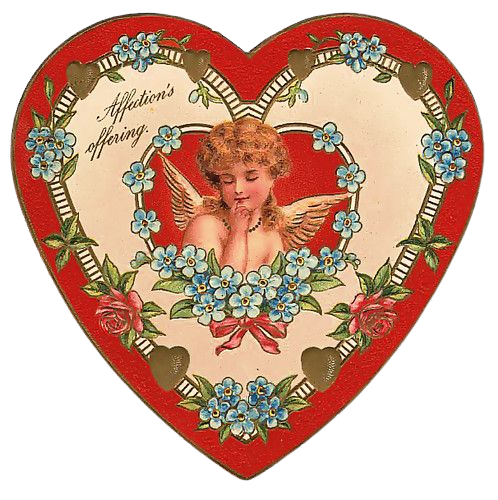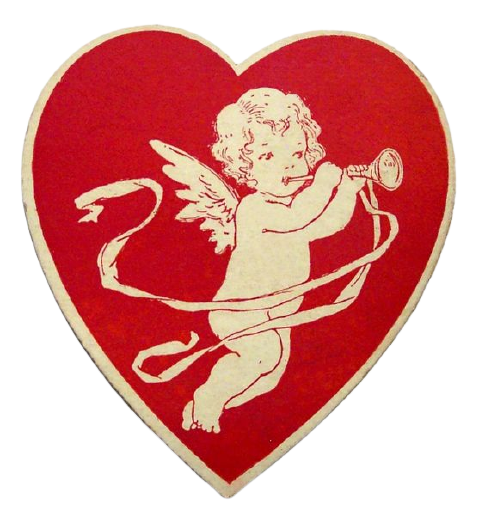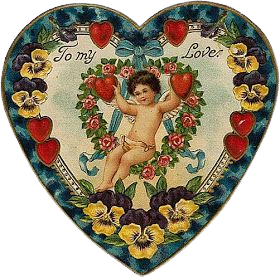Backgrounds Set The Stage For Characters And Stories To Unfold.








Backgrounds set the stage for characters and stories to unfold.
More Posts from Fromhisleftrib and Others

"Who are you?' said the Caterpillar.
This was not an encouraging opening for a conversation. Alice replied, rather shyly, 'I — I hardly know, sir, just at present — at least I know who I WAS when I got up this morning, but I think I must have been changed several times since then.'"
Lewis Carroll - Alice's Adventures in Wonderland, 1865.
Arantza Sestayo - Alice and the Caterpillar.

Baby, if you wanna leave
Come to California, be a freak like me, too






Screw your anonymity
Loving me is all you need to feel



Heart shaped vintage valentine postcards

fallen angels (1995) dir. wong kar wai
If you take requests: Do you have any ideas on what pajamas would look like during that era?
Hi Nonnie!
Just to create a baseline: I generally say that the show's setting is more-or-less equivalent of 1880-ish in our timeline, based on the dresses worn by the extras in the winter fete scene. That being said...
Okay, there is actually not that much to go about sleepwear, but I did look into things, and did find some info:
Sleepwear in general: There wasn't really clothing specifically made for sleeping up until the 19th century, and people would generally sleep in their underwear (which, of course, meant a shift for women and long shirt for men). From the 19th century, you have nightgowns (floor-lenght, for women) and nightshirts (ankle-calf lenght, for men). Originally these were all white (easy to clean), cut with straight lines, with a high neckline, and were mostly unadorned. Later on patterns and colors, as well as adornmenst, such as lace, frills, and bows, became fashionable as well (Alina's nighgown in the show is pretty on-point!"). No underwear/panties were worn under the nightgown/shirt. After taking off the day dress but before bed, a night jacket, a shorter garment meant to be seen by other people, could be worn to protect the wearer from chill. The dressing gown is the longer version--long enough to cover the nightgown--of the night jacket could have also been worn around the house as a kind of loungewear. The male equivalent of the dressing gown was the Persian-inspired, calf-lenght Banyan, which could have been worn around the house over breeches/trousers, shirt, and vest. Well-to-do people, especially women, also tended to wear a nightcap, that protected their hair (often styled only once a week) during the night. Nightcaps were such a luxury item, that they were often bequethed in wills.
As for pajamas specifically: A style adopted from India, the pajama, then known as Mogul's Breeches, originally understood as a pair of loose pants tied at the waist, was briefly popular in the seventeenth century as loungewear. During Victorian times, it could have been worn as such around the house, by men, with a smoking jacket over it. It did not became a designated sleepwear until around 1870, first only for men. Pajamas for women were introduced around 1886, and they were first a combination of pants and a knee-lenght nightgown with some frills and buttons down the front. Modern pajamas became fashionable in 1920s, first for men, then for women, popularized by such designers as Coco Chanel.

Linen nightgown, 1830s

Cotton nightgown, 1860s

Nightgown, 1900-1903

Bed jacket/ night jacket, late 19th century

Dressing gown, 1855

Kimono-inspired dressing gown, 1885

Nightcap, c. 1850

Men's dressing gown/Banyan, 1830

Men's dressing gown, c. 1880
the kind of girl you bury in your backyard
Same Energy? same energy.




Before Sunrise (1995)
Swing Kids (1993)
all i want in life is a scene like this, is that too much to ask?
-
 graveyard-of-hopes reblogged this · 3 weeks ago
graveyard-of-hopes reblogged this · 3 weeks ago -
 sushiamicat liked this · 4 weeks ago
sushiamicat liked this · 4 weeks ago -
 steampunk-space liked this · 1 month ago
steampunk-space liked this · 1 month ago -
 propalahramota reblogged this · 1 month ago
propalahramota reblogged this · 1 month ago -
 propalahramota liked this · 1 month ago
propalahramota liked this · 1 month ago -
 lostgirlsandpixiedust liked this · 1 month ago
lostgirlsandpixiedust liked this · 1 month ago -
 batcolorwolf-blog liked this · 1 month ago
batcolorwolf-blog liked this · 1 month ago -
 aizawathecatlover liked this · 1 month ago
aizawathecatlover liked this · 1 month ago -
 tea-n-autumn reblogged this · 1 month ago
tea-n-autumn reblogged this · 1 month ago -
 laylaylamode liked this · 1 month ago
laylaylamode liked this · 1 month ago -
 mysticalpersonapsychicegg liked this · 1 month ago
mysticalpersonapsychicegg liked this · 1 month ago -
 strangesoulrebel liked this · 1 month ago
strangesoulrebel liked this · 1 month ago -
 wanderer2dream liked this · 2 months ago
wanderer2dream liked this · 2 months ago -
 violetrose-art liked this · 2 months ago
violetrose-art liked this · 2 months ago -
 nursehoney reblogged this · 2 months ago
nursehoney reblogged this · 2 months ago -
 xmakexemxlaugh52 liked this · 2 months ago
xmakexemxlaugh52 liked this · 2 months ago -
 jessmcriano liked this · 2 months ago
jessmcriano liked this · 2 months ago -
 morningtears liked this · 3 months ago
morningtears liked this · 3 months ago -
 fandomcrazygirl13 reblogged this · 3 months ago
fandomcrazygirl13 reblogged this · 3 months ago -
 fandomcrazygirl13 liked this · 3 months ago
fandomcrazygirl13 liked this · 3 months ago -
 artistafrustadomain liked this · 3 months ago
artistafrustadomain liked this · 3 months ago -
 ricketybcnts liked this · 3 months ago
ricketybcnts liked this · 3 months ago -
 parsimmony liked this · 4 months ago
parsimmony liked this · 4 months ago -
 am00eba liked this · 4 months ago
am00eba liked this · 4 months ago -
 fagghetti666 liked this · 4 months ago
fagghetti666 liked this · 4 months ago -
 bitchytrashdreamer reblogged this · 4 months ago
bitchytrashdreamer reblogged this · 4 months ago -
 bitchytrashdreamer liked this · 4 months ago
bitchytrashdreamer liked this · 4 months ago -
 beenwaitingonthatsunshine liked this · 4 months ago
beenwaitingonthatsunshine liked this · 4 months ago -
 radbeardtastemaker liked this · 4 months ago
radbeardtastemaker liked this · 4 months ago -
 4ever2000lover liked this · 4 months ago
4ever2000lover liked this · 4 months ago -
 8og liked this · 4 months ago
8og liked this · 4 months ago -
 oya-oya-okay liked this · 5 months ago
oya-oya-okay liked this · 5 months ago -
 darthmarcus2006 liked this · 5 months ago
darthmarcus2006 liked this · 5 months ago -
 dweeb-who-reads liked this · 5 months ago
dweeb-who-reads liked this · 5 months ago -
 unhealthilyobssesed reblogged this · 5 months ago
unhealthilyobssesed reblogged this · 5 months ago -
 unhealthilyobssesed liked this · 5 months ago
unhealthilyobssesed liked this · 5 months ago -
 nissaimmortal reblogged this · 5 months ago
nissaimmortal reblogged this · 5 months ago -
 nissaimmortal liked this · 5 months ago
nissaimmortal liked this · 5 months ago -
 snookiem liked this · 5 months ago
snookiem liked this · 5 months ago -
 alexa-santi-author liked this · 5 months ago
alexa-santi-author liked this · 5 months ago -
 the-haven-of-fiction reblogged this · 5 months ago
the-haven-of-fiction reblogged this · 5 months ago -
 onionrimgs liked this · 5 months ago
onionrimgs liked this · 5 months ago -
 ihatepeoplewhentheynotpolite reblogged this · 5 months ago
ihatepeoplewhentheynotpolite reblogged this · 5 months ago -
 seray125 liked this · 5 months ago
seray125 liked this · 5 months ago -
 zowylander liked this · 5 months ago
zowylander liked this · 5 months ago -
 quillocke liked this · 6 months ago
quillocke liked this · 6 months ago -
 thatonewallflower03 liked this · 7 months ago
thatonewallflower03 liked this · 7 months ago -
 safelyinsideabook liked this · 7 months ago
safelyinsideabook liked this · 7 months ago -
 ellavalens liked this · 7 months ago
ellavalens liked this · 7 months ago -
 tea-party-with-drosera liked this · 7 months ago
tea-party-with-drosera liked this · 7 months ago

"The inspiration is a nineties girl with platform shoes who wants to be unhappy"
383 posts

